Abstract 9/2022
Table of content
Robert Tomanek – Instruments to decarbonize urban mobility
Kisielewski Piotr, Kołaczek Jacek, Dańda Mariusz – Model of transport planning in the relationship between organizer and operator of public transport
Aleksandra Ciastoń-Ciulkin, Filip Bejmert – Solutions for integrating agglomeration railways with other modes of transport on the example of the Łódź Metropolitan Railway (ŁKA)
Mariusz Soboń – Opportunities to counteract transport exclusion on the example of the Gorlice poviat
Krzysztof Krawiec, Mátyás Koniorczyk, Krzysztof Domino – Application possibilities of quantum computing in modelling transport systems and processes
Abstracts
Robert Tomanek
Instruments to decarbonize urban mobility
Abstract: Decarbonization is one of the trends in balancing urban mobility. It is about reducing greenhouse gas emissions. Decarbonization has a positive effect on climate protection, but also improves the quality of life in cities. The basic instruments of decarbonizing urban mobility include electrification of drives in road transport, development of collective urban transport, popularization of zero-emission means of personal transport – primarily bicycles, and limiting mobility needs by replacing physical mobility with cybermobility resulting from work and remote learning. The above-mentioned tools should be treated as components of strategies built individually for the needs of different cities and agglomerations.
Key words: public transport, urban mobility, decarbonization of urban mobility
Kisielewski Piotr, Kołaczek Jacek, Dańda Mariusz
Model of transport planning in the relationship between organizer and operator of public transport
Abstract: The growing importance of public transport forces changes to the organization of transport. In the established standard of the division of competences between the organizer and transport operators, along with the intensification of dynamic transport disturbances and the increase in passenger expectations, the lack of the possibility of ongoing data exchange between these institutions has become a problem. The current asynchronous cooperation model is based on two separate IT systems, separate databases with inconsistency in terms of format and scope of data. The exchange is carried out using printouts, .xml files or intermediate databases with a large share of manual editing, which causes delays in work, numerous errors, misunderstandings and, consequently, a reduction in the quality of transport services and their high cost. A solution that has not been noticed so far is the change of the model to synchronous cooperation between both institutions, by implementing a uniform software and one common database. Then all users on the part of the organizer and transport operators, in accordance with the allocated rights, work simultaneously, in real time, based on a uniform topology and consistent transport data. In such a system, there are no errors, delays, it is possible to plan all types of transport in one system, and above all, it is possible to optimize at every stage of planning, which in turn contributes to the improvement of the quality of transport and a significant reduction in costs. This is a sufficient reason to immediately introduce a new, synchronous model of cooperation between the organizer and public transport operators as a standard proposed in the article.
Key words: urban transport, public transport, transport planning, organization of transport process
Aleksandra Ciastoń-Ciulkin, Filip Bejmert
Solutions for integrating agglomeration railways with other modes of transport on the example of the Łódź Metropolitan Railway (ŁKA)
Abstract: This article presents examples of solutions integrating the agglomeration railway system with other transport systems that have been implemented in the Łódź Voivodeship. Łódź Metropolitan Railway (ŁKA) is an agglomeration railway system launched in the Łódź Voivodeship in 2014 with five radial routes: Łódź – Zgierz/ Kutno/ Sieradz/ Koluszki/ Łowicz Główny. Since then, ŁKA’s transport offer has been systematically developed: new train connections have been opened, transport workload has been increased, and the quality of services has been improved, including through the integration of railways with other transport systems. Solutions in the area of tariff integration, or even joint honouring of rail tickets and public transport tickets, rail-bus integration counteracting transport exclusion or integration of railways with the public bicycle system are worth wider attention and adoption in other regions of the country. The presented solutions are all the more interesting, as they are not necessarily point-to-point, but systemic in nature.
Key words: agglomeration transport, passenger integration, integrated ticket, Łódź agglomeration railway
Mariusz Soboń
Opportunities to counteract transport exclusion on the example of the Gorlice poviat
Abstract: Transport exclusion is one of the most discussed topics in Poland’s transport policy in recent years. The article aims to examine the level of transport accessibility and to define the methods of counteracting transport exclusion in poviats based on the current state of the transport system of the Gorlice poviat. The diagnosis was carried out based on address data collected from the State Register of Borders (PRG), data from the Central Statistical Office (GUS), and timetables of carriers. Based on the obtained data, a socio-economic analysis was carried out and the main problems concerning individual modes of public transport were defined. Based on the analysis of the availability of time and space, changes have been proposed, including, among others, the method of financing public transport, establishing new lines, or increasing the frequency of vehicles. The subject of modern solutions, such as buses on demand, carpooling, or the use of school buses in the regular transport operating, was also discussed. The article ends with a comparison of the transport exclusion state before and after implementing the suggested changes.
Key words: public transport, transport exclusion, accessibility
Krzysztof Krawiec, Mátyás Koniorczyk, Krzysztof Domino
Application possibilities of quantum computing in modelling transport systems and processes
Abstract: Nowadays, the need to take proper decisions in the shortest possible time seems more important than ever. This is the case for many transportation processes in various transportation systems. At the same time, in the operations research community, new, more efficient algorithms for decision support are being developed, which, along with the development of computing technologies, makes it possible to solve more and more problems efficiently. One of them is quantum annealing, which is possible using, among other things, the D-Wave computer. The article presents an outline of the possibility of its use to support dispatching decisions related to efforts to restore the normal operation of train traffic on a section of the railway network in a situation where there are significant delays in rail traffic on the line.
Key words: public transport, quantum computing, D-Wave

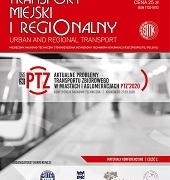
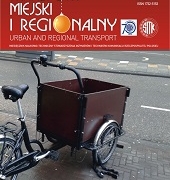
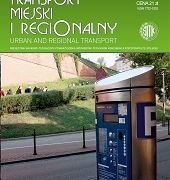
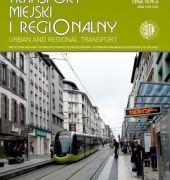 SITK RP
SITK RP 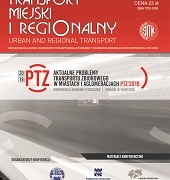
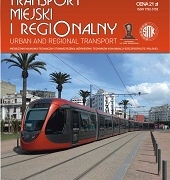 SITK RP
SITK RP 
 SITK RP
SITK RP SITK
SITK